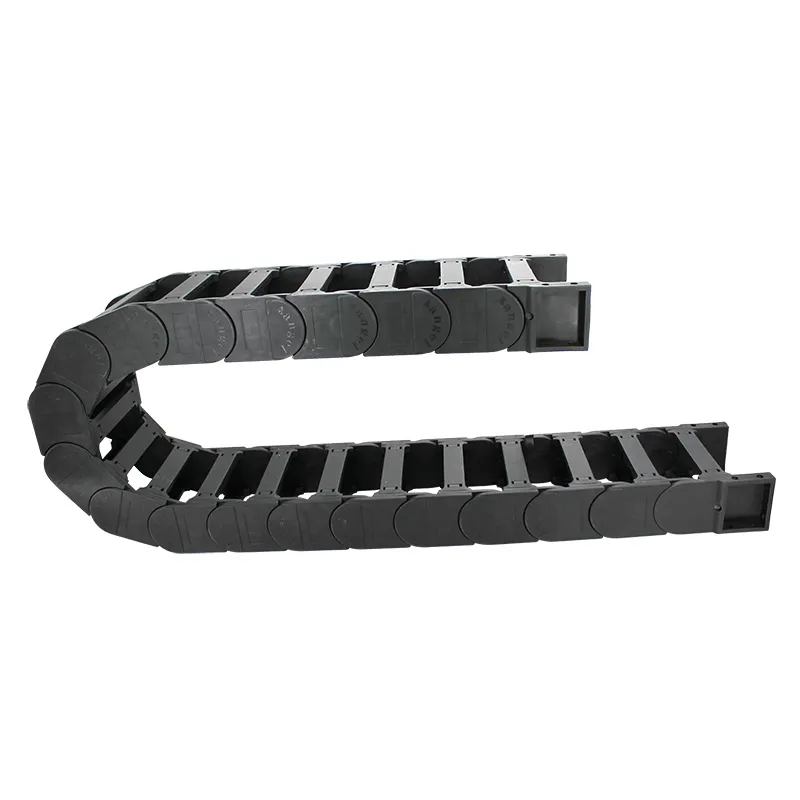Reinforced Drag Chains for Enhanced Durability and Performance in Various Applications
Understanding Reinforced Drag Chains Essential Components for Industrial Mobility
In the fast-evolving world of automation and manufacturing, the need for efficient, reliable, and durable mechanical solutions is paramount. One such solution that has gained prominence is the reinforced drag chain, a vital component in various applications, particularly in environments where cables and hoses require protection and management during movement.
What are Reinforced Drag Chains?
Reinforced drag chains, also known as cable carriers or energy chains, are specialized conduits designed to guide and protect moving cables, hoses, and hoses in machinery. These chains are often used in conjunction with robotic arms, CNC machines, and other dynamic systems where a large amount of flexible wiring is necessary. The “reinforced” aspect refers to additional structural integrity, ensuring that these chains can withstand heavy loads, abrasive conditions, and prolonged use.
Traditionally, drag chains were made from simple materials which could lead to wear and tear over time. However, reinforced designs often utilize high-strength polymers, metals, or a combination of materials that enhance their functionality and lifespan. This is particularly beneficial in harsh industrial environments, where the chains may be exposed to extreme temperatures, chemicals, and physical stress.
The Importance of Drag Chains in Industrial Applications
In industrial settings, the moving parts of machines require reliable solutions to prevent damage to cables and hoses. For instance, in automated assembly lines, the continuous movement of machinery can lead to wear and potential failure of standard wiring setups. Drag chains effectively mitigate these risks by holding cables securely, reducing friction and preventing tangles.
Reinforced drag chains are particularly vital in applications where heavy-duty performance is expected. Industries such as automotive manufacturing, aerospace, and heavy machinery rely on these chains to ensure that their systems function smoothly while maintaining the safety of the equipment and personnel.
Advantages of Reinforced Drag Chains
1. Enhanced Durability The use of reinforced materials means these drag chains can endure significant wear and tear. This durability reduces the frequency of replacements and resulting downtime, ultimately saving costs.
reinforced drag chain

2. Flexibility and Freedom of Movement Drag chains are designed to provide flexibility in movement. This flexibility allows for more intricate machine designs and layouts, enabling greater efficiency in manufacturing processes.
3. Protection Against Environmental Factors In industrial environments, the cables and hoses can be susceptible to damage from environmental elements, such as dust, moisture, and chemicals. Reinforced drag chains offer enhanced protection, prolonging the life of the cables and hoses they carry.
4. Ease of Installation and Maintenance Many modern drag chains are designed for quick installation and easy access to cables and hoses for maintenance or upgrades. This ease of use can significantly reduce labor costs and time delays during setup or repairs.
5. Noise Reduction The movement of cables and hoses can often produce noise during operation. Reinforced drag chains help to minimize this noise, contributing to a more pleasant working environment.
Applications Across Various Industries
Reinforced drag chains have a wide range of applications in various sectors. In the automotive industry, they are used in robotic welding, parts assembly, and painting operations where precise control of cables is paramount. In manufacturing, they facilitate the wireless transfer of power and data across complex machinery. In textiles, they help automate processes, overseeing lengths of fabric moving through different machines seamlessly.
Moreover, these chains are also increasingly utilized in the burgeoning field of renewable energy, particularly in wind and solar farms, where they protect the wiring that connects sensitive equipment over vast distances.
Conclusion
As industries continue to innovate and evolve, the importance of components like reinforced drag chains cannot be overstated. Their ability to facilitate safe and efficient operations while enhancing the longevity of essential wiring and hoses makes them a critical component in numerous applications.
Investing in technology that increases reliability and longevity—like reinforced drag chains—can set a solid foundation for productivity and efficiency in manufacturing and automation. As we look to the future, these chains will undoubtedly play an essential role in shaping the industry, helping to usher in a new era of innovative solutions for complex mechanical challenges.








